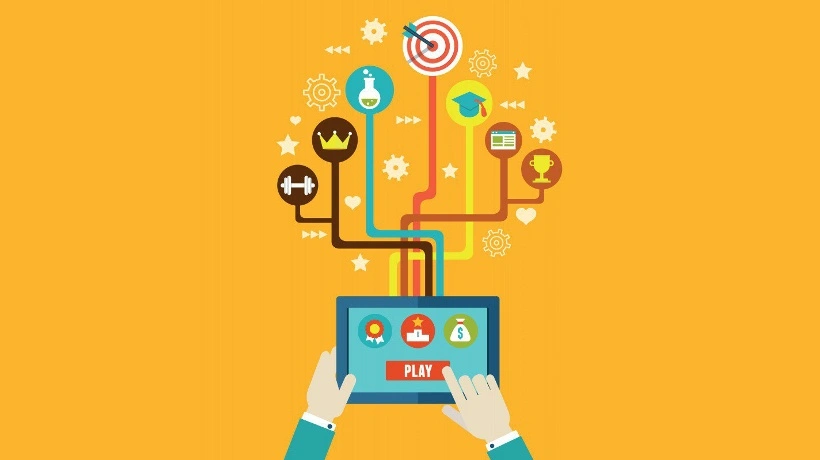The Power of Interactive Games for E-Learning and Development

Introduction
In today’s digital age, interactive games have become deeply integrated into e-learning for students of all ages. From K-12 classrooms to higher education, the magic of skillfully designed interactive games as tools for enhancing learning and nurturing development is on the rise. Let’s discover the boundless potential of using interactive games to boost educational outcomes and fuel intellectual growth with Sleave. We will delve into the multifaceted benefits of interactive games, their impact on diverse learning modalities and developmental domains, and considerations for effective implementation.
The Benefits of Interactive Games for Engaged E-Learning
Interactive games offer numerous advantages for engaged e-learning. They promote active learning and immediate feedback, fostering deeper understanding and motivation. Adaptive learning tailors content to individual needs, while collaborative multiplayer games enhance critical skills like communication and problem-solving through group challenges, fostering creative thinking and growth in students.
1. Active Learning and Immediate Feedback
Interactive games offer a uniquely engaging style of hands-on learning that goes beyond traditional passive online teaching methods. They promote active student participation and engagement, enhancing motivation and promoting a deeper understanding of the material. Additionally, the immediate feedback loops in games allow students to continually assess their own progress, identify knowledge gaps, and continuously improve.
2. Adaptative Learning
Thoughtfully designed games hold adaptive algorithms to tailor and personalize e-learning to each student’s needs, interests, and capabilities. By tracking individual progress and spontaneously adjusting difficulty, games can provide an optimal challenge point for students at different levels. This promotes a sense of momentum as online learners explore subjects at their own pace.
3. Collaborative skills
Moreover, well-planned multiplayer games present opportunities to meaningfully develop collaboration, communication, critical thinking, and complex problem-solving skills. Navigating group challenges within immersive game environments allows for constructive risk-taking and growth. Students learn to synthesize diverse perspectives, leverage collective strengths, and think creatively.
The Impact on E-Learning Outcomes and Development
Interactive games offer multisensory, skill-building experiences, enhance learning across domains, and foster 21st-century competencies, all within a carefully balanced digital framework.
1. Enhanced Learning Across Domains :
Extensive research indicates interactive games, when carefully integrated, can positively impact e-learning outcomes across cognitive, social, and emotional developmental domains.
2. Multisensory Engagement:
Multisensory experiences in games enhance information encoding and retention compared to conventional online teaching formats.
3. Stimulating Cognitive Processing:
Stimulating visual, auditory, and kinetic pathways creates deeper cognitive processing and improves memory formation.
4. Developing Critical Thinking:
Interactive narratives and game mechanics provide concrete opportunities to apply critical thinking and decision-making skills. Students learn to strategize, analyze complex systems, weigh variables, and make reasoned choices.
5. Building Resilience:
Overcoming obstacles builds mental flexibility, grit, and growth mindsets.
6. Encouraging Creativity:
Open-ended design encourages creativity, innovation, and self-expression. Experimenting safely within virtual systems promotes intellectual risk-taking and possibility thinking. The freedom to explore, design, create, and collaborate without fear of failure is deeply empowering.
7. Alignment with Curriculum Goals:
Achieving these outcomes requires intentional alignment with curriculum goals, developmental needs, and instructional scaffolding.
8. Balanced Digital Engagement:
E-learning educators must actively monitor play time, balance digital engagement with other learning activities, and track progress towards objectives.
9. Empowering 21st-Century Competencies:
When designed collaboratively, games create developmentally rich e-learning experiences that equip students with the agency, tools, and competencies needed to thrive in the 21st century.
Considerations for Effective E-Learning Implementation
Despite the immense potential of thoughtfully designed games, certain considerations are vital for successful e-learning implementation.
1. Aligned Learning Objectives:
Educators must intentionally select and incorporate games that align tightly with targeted learning objectives. Gameplay mechanics and engagement loops should complement curricular goals, not distract from them.
2. Equitable Access:
Equitable access must be ensured so all online students can benefit. Adequate technology, resources, scaffolding, and instruction should be provided to support diverse needs and abilities. Individual learning styles and preferences should also inform game integration.
3. Balancing Screen Time:
It is also essential to balance screen time with other critical modes of learning like physical movement, social interaction, reflection, and offline activities. While powerful, games are just one tool and should be judiciously combined with other hands-on, student-centered experiences.
4. Collaborative Design:
Co-designing games in cross-disciplinary teams of educators, designers, and developers allows for leveraging engagement while optimizing educational outcomes. Games designed solely for entertainment often fail to support e-learning goals without careful instructional alignment.
By proactively addressing these considerations, the tremendous potential of thoughtfully engineered interactive games can be harnessed to create research-driven, developmentally rich e-learning experiences that are truly transformative.
Conclusion:
In conclusion, well-designed interactive games hold remarkable potential to reimagine e-learning for the 21st century. Their unique ability to actively engage online students, provide adaptive challenges, encourage critical thinking, and foster collaboration is transformative. However, to unlock their full potential, games must be intentionally selected, thoughtfully scaffolded, and balanced with non-digital activities. When aligned with curriculum goals and developmental needs, interactive games can become powerful tools to motivate,
To learn more about e-learning education, visit https://esleave.com/web/how-it-works/
Author: Sumeet Kumar
